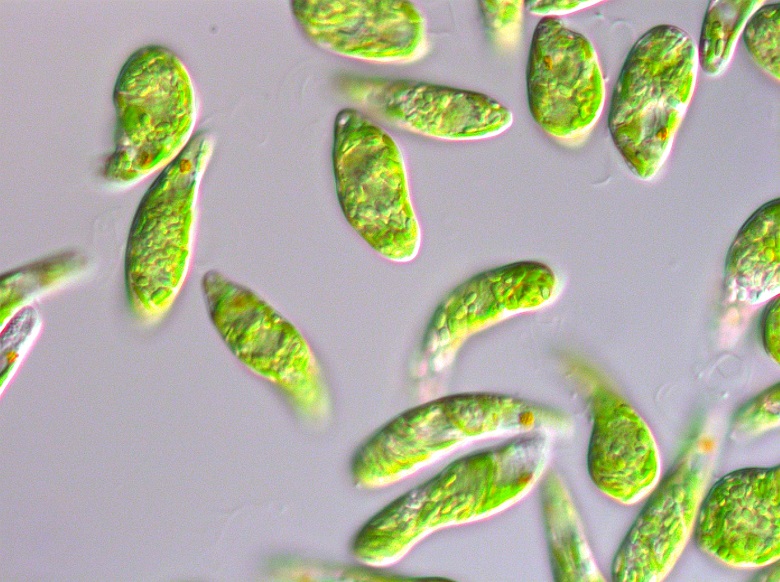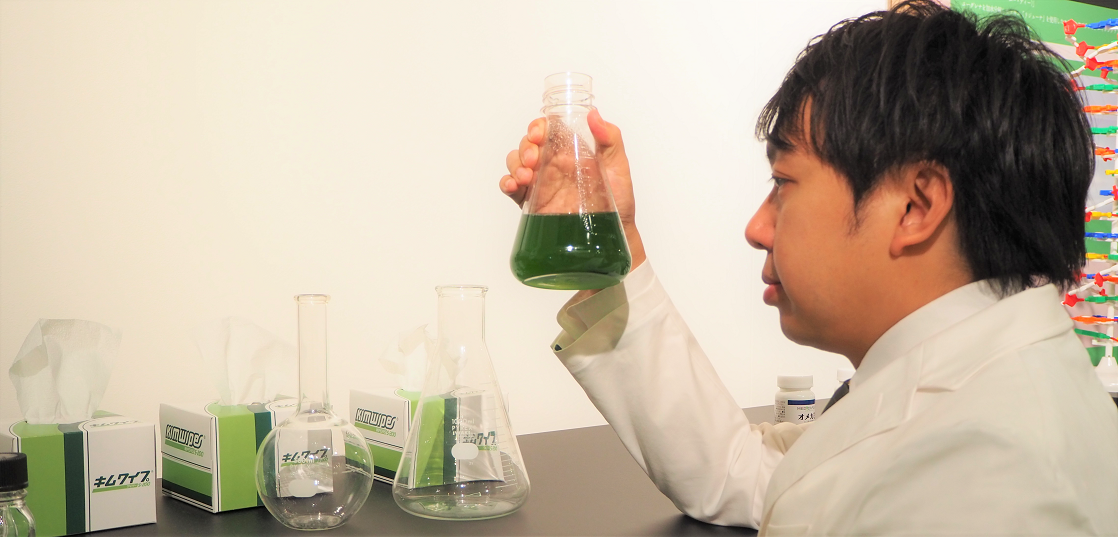It has been about 15 years since Euglena succeeded in mass culturing Euglena for the first time in the world.
Suzuki, a researcher who supported the success and one of the founding members, describes science and business from the perspective of research and business activities.
The theme of this time is "I am fascinated by Euglena".
Encounter with Euglena
I became involved in Euglena research when I was in the third year of university. I arrived while searching for creatures that are interesting as research subjects and have the potential to contribute to society, such as being able to be used industrially. There were other creatures that I found purely interesting as research subjects, but none of them surpassed Euglena when considering the difficulty and impact of industrial utilization.
The more I learned about Euglena, the more I started researching Euglena, the more I became interested in its potential. My academic advisor at the university was also presented with research proposals on other themes, but I wanted to proceed with my research on Euglena, so I decided to make my graduation thesis on Euglena. After that, I proceeded with my master's and doctoral programs, and I have continued to this day, but I am still fascinated by the possibilities of Euglena.
This time, I would like to introduce the infinite possibilities of Euglena.
Road to industrial utilization of Euglena
First of all, I would like to introduce how human beings have been paying attention to the potential of Euglena.
It is said that the first discoverer of Euglena was Antonie van Leeuwenhoek, a Dutch scientist. He was the inventor of the microscope and the discoverer of many microbes. He discovered Euglena in the 1600s and wrote it down in a sketchbook. This is considered to be the oldest record. It is said that this creature was later named "Euglena (Eu beautiful + glena eyes)" (scientific name) because it looks like it has beautiful eyes.

It is said that the reason why it was named "Euglena" is that it looks like it has beautiful red eyes.
Then, in the 20th century, research on Euglena progressed at an accelerating pace. Around 1950, American scientist Melvin Calvin used Euglena to elucidate the mechanism of photosynthesis and later won the Nobel Prize. In addition, since the 1970s, the possibility of efficient protein production using Euglena has been investigated, and research on the culture and nutritional value of Euglena has progressed. Since the 1990s, Dr. Jiro Kondo (Professor Emeritus, The University of Tokyo), who is also a designer of domestic passenger aircraft, has been studying industrial utilization, such as advocating the simultaneous implementation of food production and carbon dioxide immobilization using green worms.
In order to actually utilize it in industry, mass cultivation of Euglena outdoors is indispensable, and this was exactly the bottleneck (problem). We, Euglena, tackled this challenge with the help of the knowledge and experience of many researchers, and in December 2005, we were able to successfully cultivate Euglena outdoors for the first time in the world. .. Since then, we have utilized Euglena in industries such as food, cosmetics, and biofuels, and continue to this day.
Possibility of industrial utilization of Euglena
In a word, the characteristic of Euglena is that it is a hybrid. By the way, the original meaning of the word hybrid is derived from the Latin word of boar-pig hybrid, which is a combination of pig and wild boar, and means "crossed species". Euglena is a hybrid creature that has both plant and animal properties, although it is a little different from its original meaning. This is because Euglena can take a survival strategy that moves to a place where the living environment is prepared, such as when there is a lot of light, while using the energy stored by photosynthesis for growth.
This means that Euglena can grow nutritious animal proteins while growing photosynthesically like plants. The characteristics of such a hybrid Euglena are very attractive for industrial use. This is because immobilizing carbon dioxide by photosynthesis can contribute to environmental problems, and high-quality proteins may contribute to solving nutritional problems in the world.

Attractiveness of research on the evolution of Euglena
I mentioned that the characteristic of Euglena is hybrid, but Euglena was not born by crossing males and females like a hybrid species like Boar-pig hybrid, but protozoa without chloroplasts produce green algae. It is believed that it has taken up and has chloroplasts.
This has been supported in various ways due to the progress of genetic analysis of Euglena, but there are still many things that are still unknown. This is because Euglena has a genome size that is dozens of times larger than that of general phytoplankton, and its complexity has not revealed the whole picture (although it is a snake, amoeba is more than 100 times larger than the human genome. It is said that it has a size, and the analysis of this creature is even more difficult).
The elucidation of the birth and evolutionary path of Euglena, and the analysis of the genetic information of Euglena that supports it, have become major research themes due to the uniqueness of Euglena as an organism. Even now, I am working on elucidating this big theme with a professor who is an expert in plant genes and RIKEN, which is one of the attractions of researching Euglena.
Infinite possibilities of Euglena
There is much more research to be done on Euglena. For example, Euglena has a mechanism to store oil in its cells when it is placed in the absence of oxygen. This oil can be used as a raw material for jet fuel and other materials, and is extremely promising as a raw material for next-generation biofuels. It is very important to study this information because if you know the detailed information on the gene of Euglena mentioned above, you can understand what kind of Euglena produces the target substance in what form.
In addition, many substances possessed by green worms that contribute to our health promotion have been found, and it is possible to industrialize them by efficiently producing specific useful substances such as carotenoids that are often found in plants. I think that the sex is also great. In the future, I plan to promote research in this field as well.
As you can see, Euglena is a unicellular organism, but its small body is full of various possibilities. When I'm studying Euglena, I sometimes think it's like a microcosm. When asked why they are fascinated by Euglena, you can answer that Euglena has endless possibilities.

Euglena Executive Officer in charge of R&D at Corporation
SUZUKI Kengo
Graduated from the University of Tokyo, Faculty of Agriculture, majored in biological system engineering, founded Euglena Co., Ltd. in August 2005, and became a director and general manager of the R&D Department. In December of the same year, we succeeded in the world's first large-scale cultivation of the microalgae Astragalus (scientific name: Euglena) outdoors for food. Received a doctorate in agriculture from the University of Tokyo in 2016. While engaged in research on the utilization of microalgae astragalus and other algae, he is also engaged in research aimed at developing the production of biofuels derived from green beetles.
Winner of the Tokyo Metropolitan Venture Technology Grand Prize (2010), and co-authored "Culture Technology for Mass Production and Commercialization of Microalgae" (Information Organization of Japan, Inc.).

